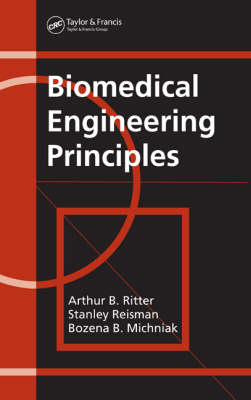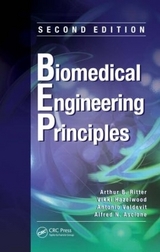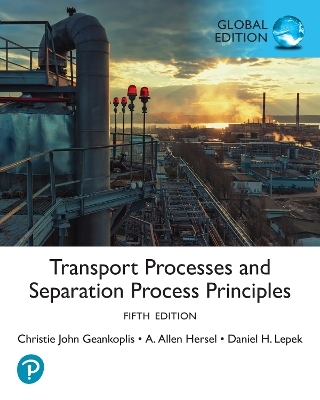
Biomedical Engineering Principles
Taylor & Francis Ltd (Verlag)
978-0-8247-9616-7 (ISBN)
- Titel erscheint in neuer Auflage
- Artikel merken
The updated edition of this popular textbook offers an overview of the major components of the field, including signal processing in bio-systems, biomechanics, and biomaterials. Introducing capstone design and entrepreneurship, the second edition examines basic engineering, anatomy, and physiology concepts to facilitate an in-depth and up-to-date understanding of flow, transport, and mechanics in biological systems and the human body. The book begins by addressing the principles of conservation of mass and development of mathematical models of physiological processes with detailed examples appropriate for an engineering student at the sophomore or first semester junior level.
Dr. Ritter received his BChE degree from the City College of New York, and his MS and PhD degrees in ChE from the University of Rochester. Before returning for his PhD degree he had over 10 years of industrial experience in the aerospace industry for the US Navy and United Aircraft in solid rocket propellant development and as a development engineer for the Mixing Equipment Company and the DuPont Co. His first academic appointment was at Stevens Institute of Technology in the department of Chemistry and Chemical Engineering where he did research on solar energy storage and conversion and optimal control of chemical processes. He taught courses in transport phenomena and process control. While at Stevens he met Francis Chinard, MD from UMD-New Jersey Medical School and started collaborative research in pulmonary transport and metabolism in-vivo. This led to a full time position in Dr. Chinard's lab in the department of Medicine at NJMS. After a few years he was recruited to the department of Physiology where he spent the next 20 years teaching Cardiovascular and Respiratory physiology, statistics for the life sciences and physical chemistry to Medical, Dental and Graduate students. His research areas were microcirculatory and cardio-respiratory physiology. He was course director of the medical physiology course for 5 years before returning to Stevens to start the Biomedical Engineering program. He still maintains an adjunct appointment at NJMS. He was the PI or Co-Pion grants from NSF, NIH, AHA and New Jersey Commission on Science and Technology. Dr. Ritter has mentored 7 PhD students in Physiology and Biomedical Engineering and over 40 Masters student's in Biomedical Engineering. He is the co-author of over 40 publications in peer reviewed journals and numerous abstracts and presentations at local, national and international conferences. He is the primary author of an undergraduate textbook in Biomedical Engineering. His current research interests are in Systems Physiology, Rotary Protein Motors, and The Failing Heart.
Introduction: Modeling of Physiological Processes
Cell Physiology and Transport
Principles and Biomedical Applications of Hemodynamics
A Systems Approach to Physiology
The Cardiovascular System
Biomedical Signal Processing
Signal Acquisition and Processing
Techniques for Physiological Signal Processing
Examples of Physiological Signal Processing
Principles of Biomechanics
Practical Applications of Biomechanics
Biomaterials
Principles of Biomedical Capstone Design
Unmet Clinical Needs
Entrepreneurship: Reasons why Most Good Designs Never Get to Market
An Engineering Solution in Search of a Biomedical Problem to Solve
Tissue Engineering
Future Trends in BME
| Erscheint lt. Verlag | 14.6.2005 |
|---|---|
| Zusatzinfo | 514 equations; 20 Halftones, black and white; 45 Tables, black and white; 327 Illustrations, black and white |
| Verlagsort | London |
| Sprache | englisch |
| Maße | 152 x 229 mm |
| Gewicht | 998 g |
| Themenwelt | Medizin / Pharmazie |
| Technik ► Umwelttechnik / Biotechnologie | |
| ISBN-10 | 0-8247-9616-0 / 0824796160 |
| ISBN-13 | 978-0-8247-9616-7 / 9780824796167 |
| Zustand | Neuware |
| Informationen gemäß Produktsicherheitsverordnung (GPSR) | |
| Haben Sie eine Frage zum Produkt? |
aus dem Bereich



